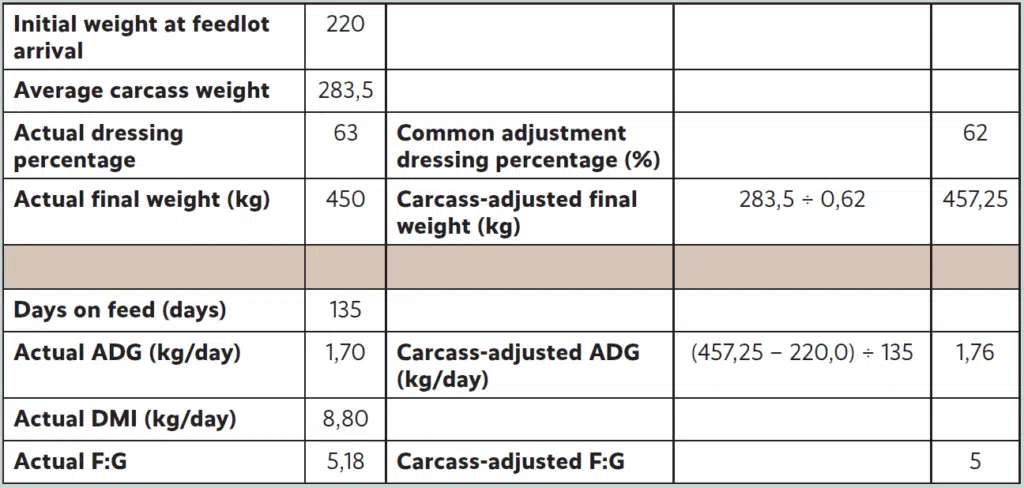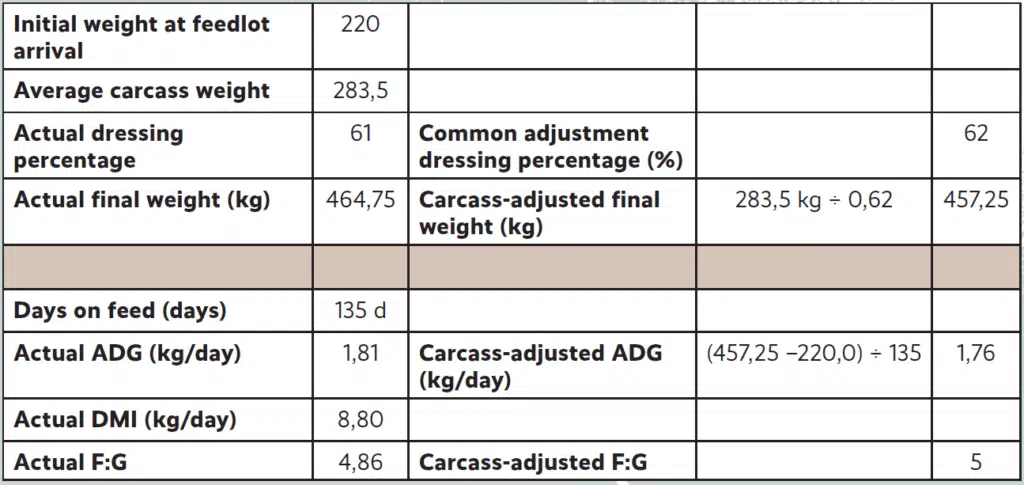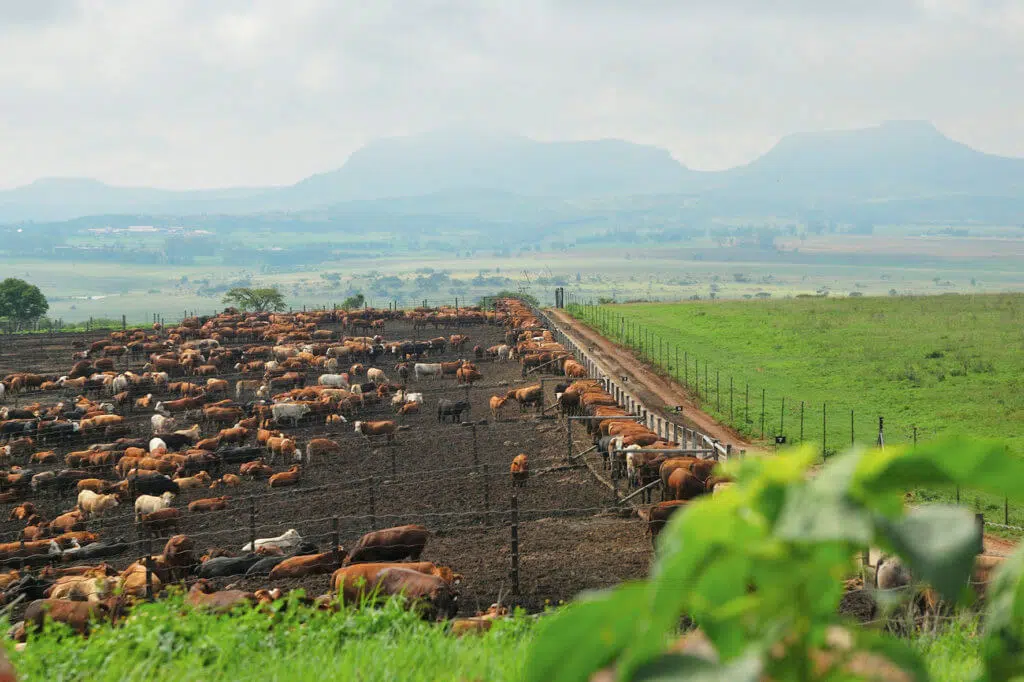It has become increasingly apparent that conventional measures of live animal feedlot performance are inadequate to express the relative profitability of an animal or a pen of cattle. This is because most cattle today are valued on either a carcass weight basis or a net carcass value basis, and the proportion of carcass weight added, relative to live weight added in the feedlot, continually increases throughout the feeding period.
The problem
The rate of carcass weight gained while the animal is in the feedlot, although not entirely linear over time, is somewhat linear until animals become extremely fat. Conversely, the rate of gain for non-carcass components of the animal is not linear and decreases dramatically over time. This latter point is intuitive, considering that the growth of many of the non-carcass components on a live animal (head, hide, horns, hooves, and offal) is mostly completed when the animal first arrives at the feedlot and these components change very little after feedlot arrival. The offshoot of these two tenets is that the carcass yield of incremental weight added during the feedlot period steadily increases.
The theoretical dressing percentage of young cattle arriving at the feedlot is low, but also highly variable and subject to their previous plane of nutrition. However, assuming a rough average of 50% carcass yield for newly arriving feeder cattle, and assuming a 62% carcass yield for fat cattle leaving the feedlot, simple mathematics suggests that the carcass yield for the weight added in the intervening days must be something greater than 62%. In fact, the incremental carcass yield for weight added in the feedlot ranges from 65% to 90%, based on the degree of fatness and genetics for muscle. So, the fatter an animal gets, the greater the incremental carcass yield of the live weight accumulated.
The solution
When attempting to evaluate differences among groups of cattle regarding feedlot performance, it’s important to connect carcass weight to the feedlot performance. However, because theoretical initial carcass yield upon feedlot arrival is highly variable (45% to 55%), an accurate estimate is not obtainable, and using a theoretical average is a poor choice that leads to incorrect conclusions. Instead, a much better and more useful alternative is carcass-adjusted feedlot performance.

ADG and improved feed-to-gain ratio.

Carcass-adjusted final weight is calculated by taking the actual average carcass weight of the group and dividing it by a standard dressing percentage used for all groups. This can be any number, such as 62%, or it can be the historical average dressing percentage of the specific feedlot. Carcass-adjusted average daily gain (ADG) and feed-to-gain ratio (F:G) can then be calculated based on this new carcass-adjusted final live body weight.
The mathematics make sense
The live performance for good-gaining and poor-gaining cattle gets adjusted up or down based on their dressing percentage. Poor-gaining cattle with good yield are rewarded and good-gaining cattle with poor yield are downgraded. As meat and carcass values change, and as feed costs change, there is potentially an incentive to adjust the previously determined fat end-point for the organisation, resulting in a necessary adjustment to anticipated days on feed.
There is a simple calculation that can be made while cattle are still on feed to estimate future carcass gain and the cost of carcass gain. The baseline numbers needed to calculate future performance are estimated ADG and dry matter intake (DMI), to that point.
If a group of cattle (with similar genetics, background, sex, geographic origin, age) have historically and are expected to convert at 5,5:1 and are consuming 9 kg DM feed per day, their expected ADG at closeout is 1,63 kg/day. If the price of meat increases dramatically relative to feed costs, there may be an incentive to increase days on feed to sell heavier carcasses and increase meat production.
To estimate the rate of carcass gain if cattle are to be fed beyond their anticipated slaughter date, we assume future incremental ADG will be 80% of close-out ADG, and carcass yield of that incremental ADG will be 80% as well.
So, if the anticipated close-out ADG is 1,63 kg/day, the estimated incremental future ADG will be 1,63 × 80% = 1,30 kg/day, and the estimated future incremental carcass gain = 1,30 × 80% = 1,04 kg/day carcass gain.
Thus, depending on the carcass value and feed costs, the return versus the cost can be determined by feeding cattle for an increased or decreased number of days to capture the greatest net profit.









